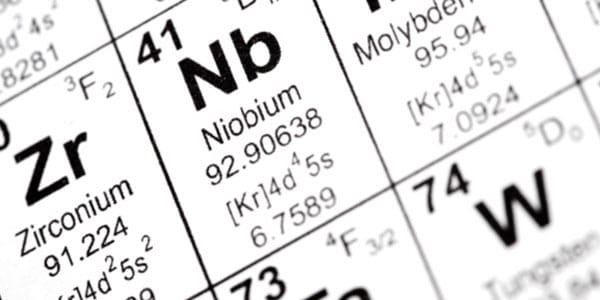Refractory Metals

Applications and Characteristics
Refractory metals are widely used in various applications because of their unique and desirable properties and behaviors, not least of which is their resistance to corrosion, as well as the extraordinary resistance to wear and heat. This group of metals are mostly used in the field of Aerospace, Chemical Processing, Furnace Components, Medical Equipment, Metallurgy, Research and Development, and Semiconductor. Glemco specializes in refractory metal parts for the semiconductor market, with a robust product line of ion implantation consumables.
The five main elements that belong to this class of metal include the following:
- Molybdenum (Mo)
- Rhenium (Re)
- Niobium (Nb)
- Tungsten (W)
- Tantalum (Ta)
All five elements share a few key properties, such as a high level of hardness at room temperature and a high melting point, especially when subjected to temperatures higher than 3,600°F (2,000°C). These metals have high density and are chemically inert. A few of the most common applications from refractory metals include wire filaments, tools, chemical vessels within corrosive atmospheres, casting molds and more. With their very high melting point, refractory metals are highly stable. These metals are highly resistant to factors like thermal shock. This means that they will not experience cracking, expansion or stress when cooled and heated repeatedly.
Refractory metals are marked by the following key physical features:
- A high boiling point. The melting points of refractory metals are higher than those of all other metals except carbon, osmium, and iridium.
- They all have a body-centered cubic crystal structure.
- They are highly resistant to creep.
Of the five metals, rhenium has the highest melting point at 5,757°F (3,186°C), while niobium has the lowest at 4,491°F (2,477°C). In terms of boiling point, niobium is at 8,572°F (4,744°C) while rhenium is at 10,105°F (5,596°C).
A Super High Melting Point
Refractory metals such as tungsten, molybdenum and tantalum have very high melting points.
High Strength
They have outstanding strength even at ultra-high temperatures. For instance, rocket cones that are made from tungsten have double the tensile strength of iron under normal temperatures.
Outstanding Abrasion and Wear Resistance
Refractory metals, especially alloys, can extend the lifespan of valve seats, seals, nozzles, and other areas prone to high wear.
Excellent Corrosion Resistance
The piping in chemical plants is typically made of refractory metals, allowing for a high degree of corrosion resistance compared to stainless steel.
Thermal Shock Resistance
Metals like tungsten can resist the stress brought by quick expansion because of heat. Tungsten has a very high melting point and can withstand a series of on and off cycles without affecting its intactness.
Heat and Electrical Conduction
Apart from the many electronic or electrical applications, refractory metals such as tungsten and molybdenum are also good as heat sinks.
Extreme Hardness
Most of the cutting tools widely used these days are fabricated out of materials like tungsten carbide. Refractory metals are also great for forming metals and steel as well in mining and drilling gas or oil wells.
High Density and Specific Gravity
Most refractory metals have high density, and these can be very useful in making golf club heads and aircraft gyroscopes.
There are refractory metals that have ultra-useful capabilities such as acting as outstanding radiation shields.
There are five refractory metals, and each come with varying properties and applications.
Tungsten is the most abundant refractory metal. It has the highest melting point and one of the highest metal densities among refractory metals. It can be very hard when combined with other elements like carbon. It is also highly resistant to corrosion. This metal is widely used in wire filaments, such as those in most of the incandescent lighting used in houses, but it is also common in industrial arc lamps and lighting.
Molybdenum is the most used refractory metal of all because it is less expensive than most others and, when made into an alloy, can be very resistant against creep and high temperatures. It also does not create amalgams, making it corrosion resistant. It is mostly used in strengthening steel alloys, particularly in structural piping and tubing. This metal also has excellent anti-friction qualities, making it an ideal component of oils and greases used in automobiles.
Tantalum is the most resistant against corrosion. It is often used in the field of medicine and surgery as well as in environments where there is high acidity. Tantalum is also the major component of computer and phone circuits or capacitors.
Niobium always comes with another refractory metal, tantalum. It is highly unique and can be worked on easily to obtain high elasticity and strength. It can be used in making electrolytic capacitors and superconductors. Niobium can also be found in nuclear reactors and vacuum tubes.
Rhenium is the most recently discovered refractory metal. It can be found with other metals in ultra-low concentrations. It is also present in other refractory metal ores. This metal is known for its high tensile strength and ductility. It is widely used in nuclear reactors, gyroscopes, and other electric components.
Since 1984
We are proud to support our local communities with jobs that offer good working environment, excellent pay and benefits, growth opportunities and stability. Proud to be an American Manufacturer and a Woman Owned Business.
Contact Us Today